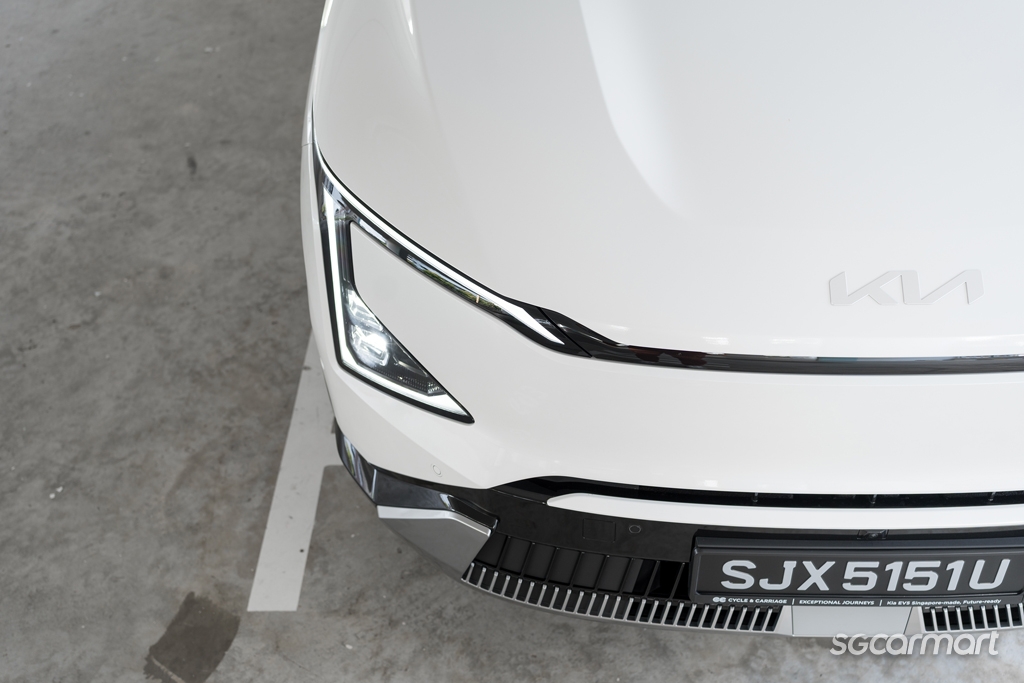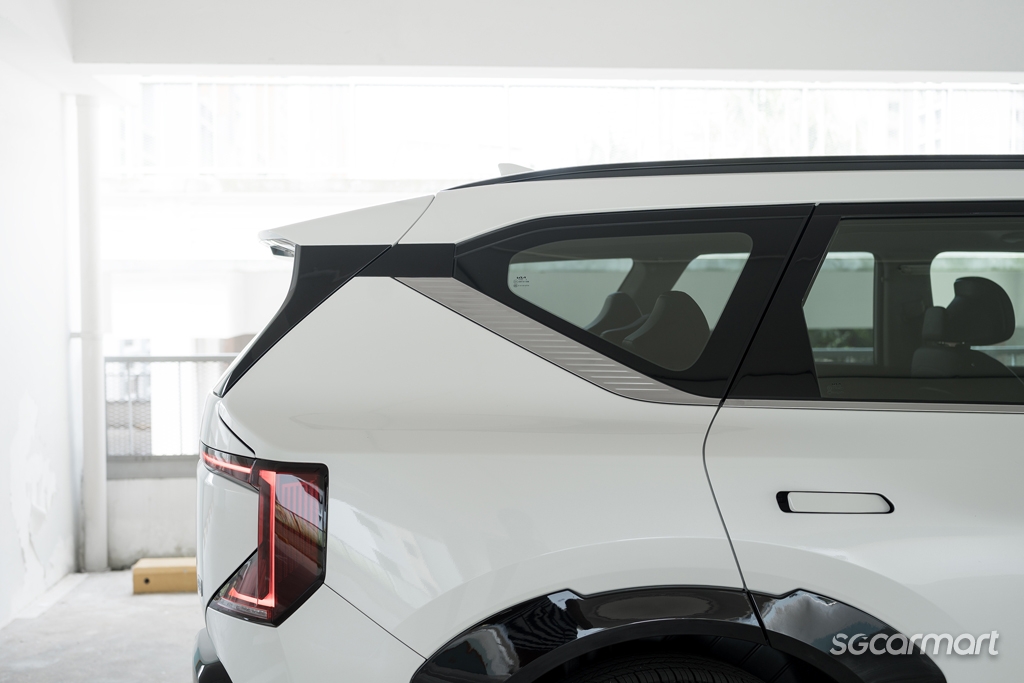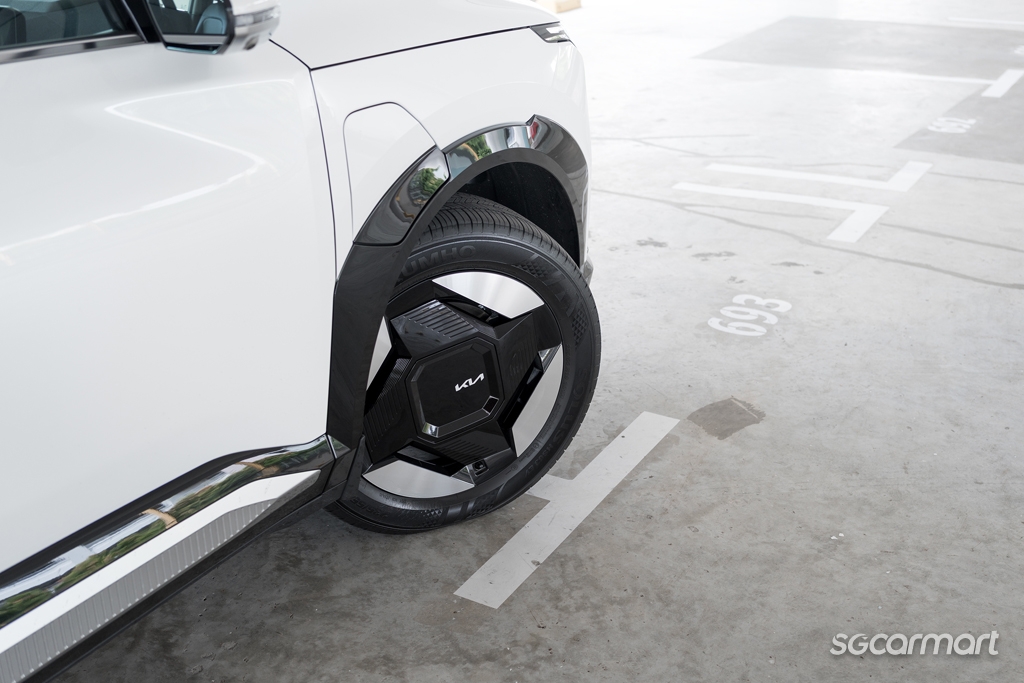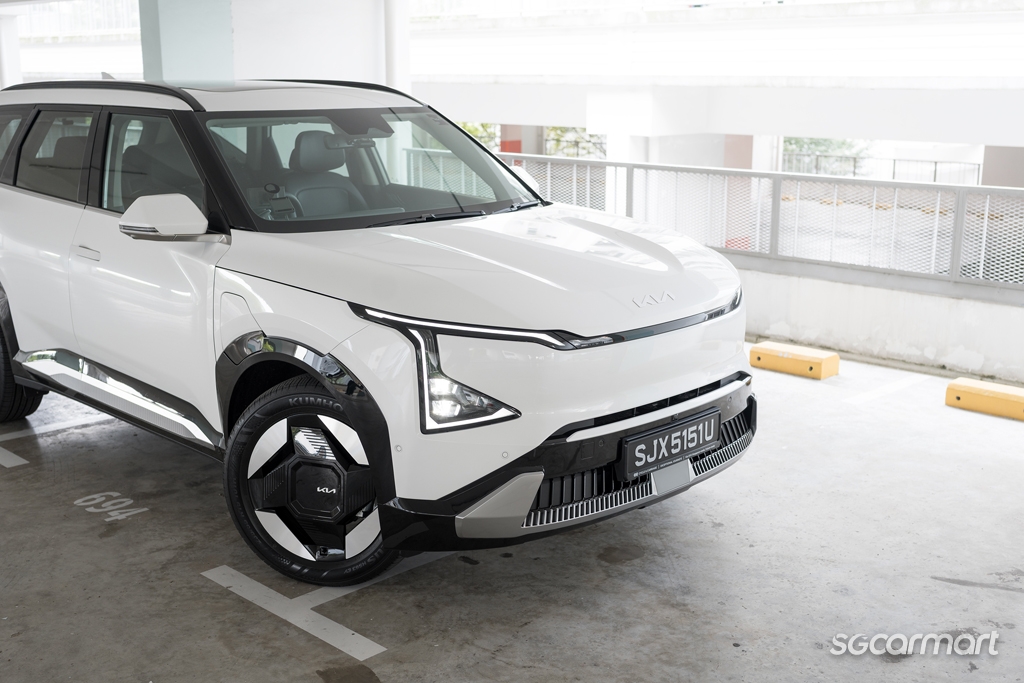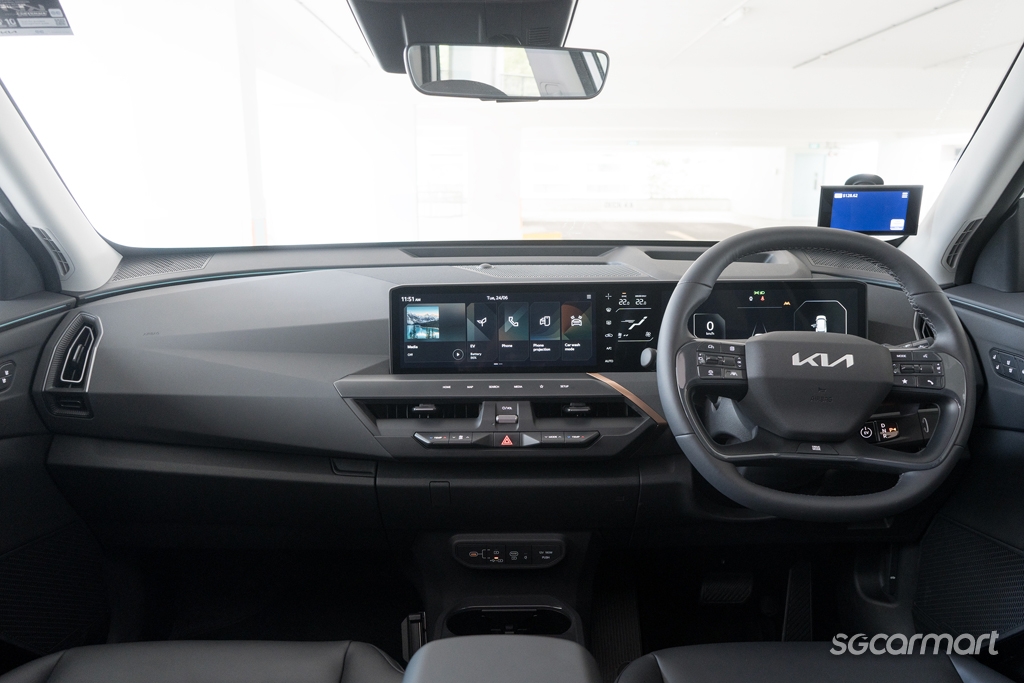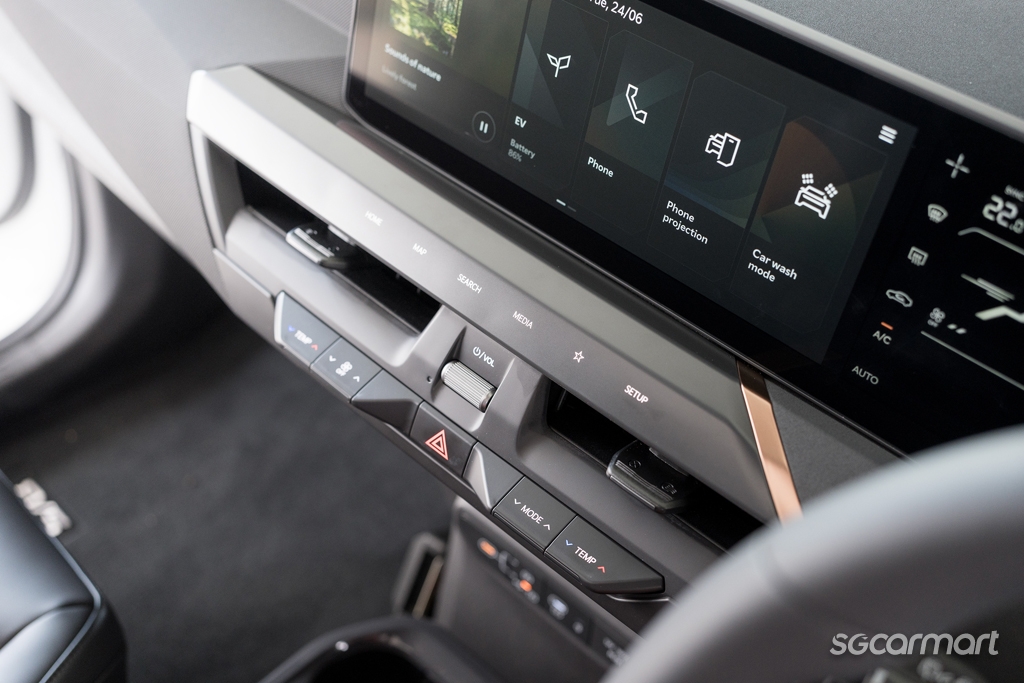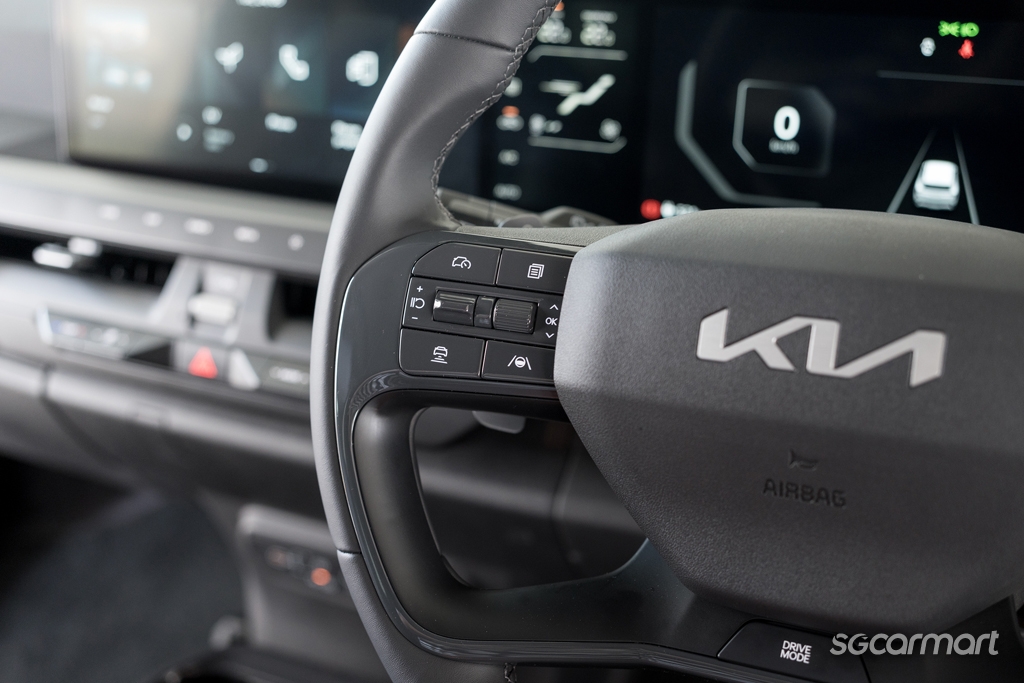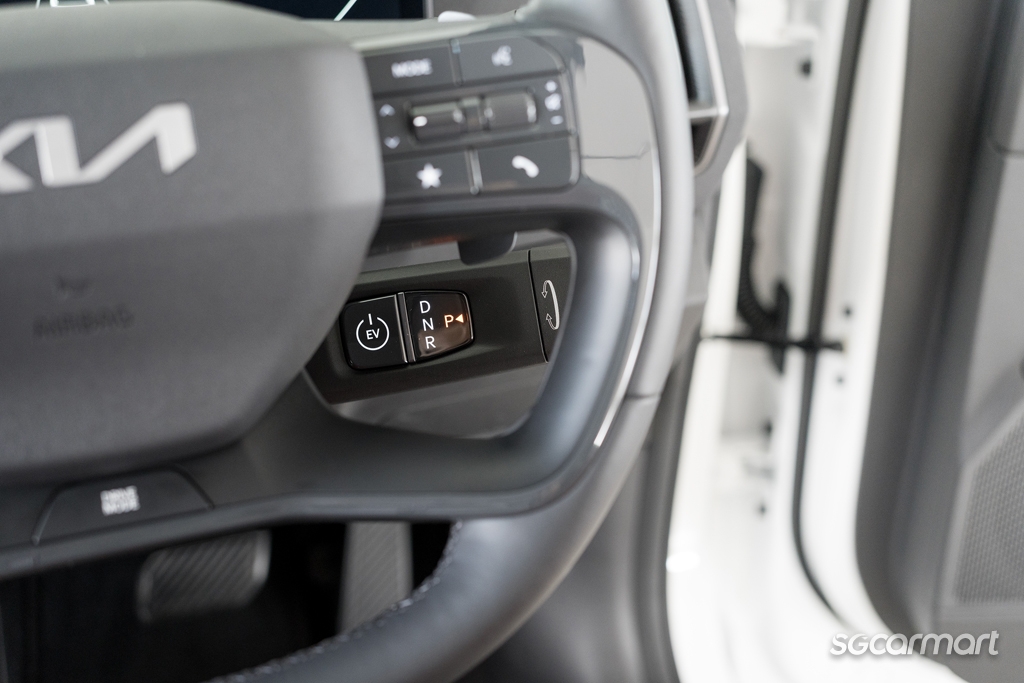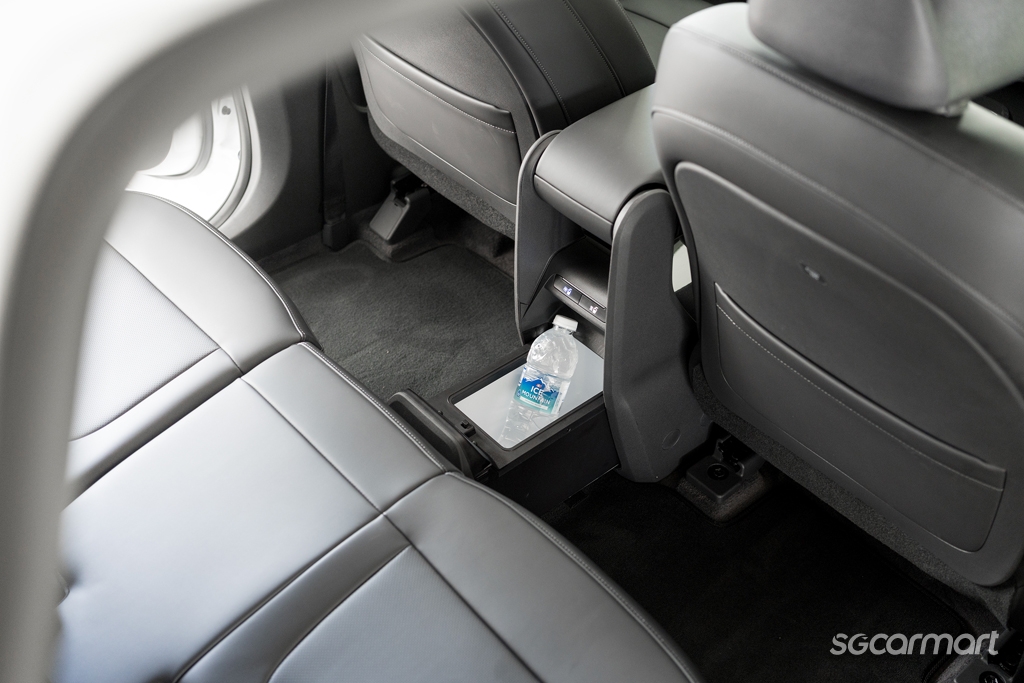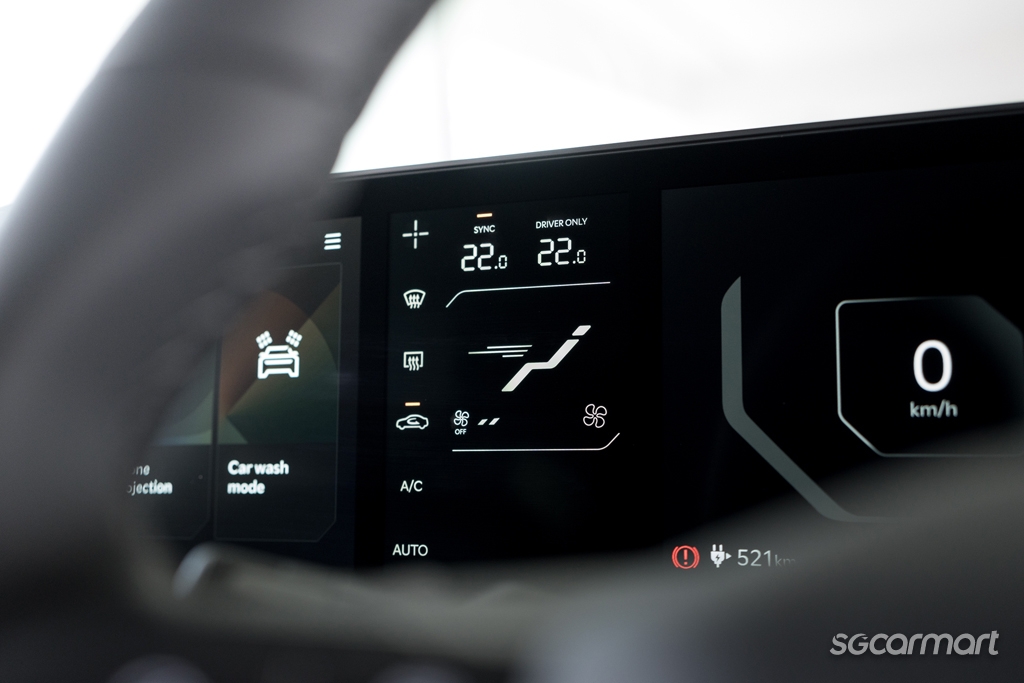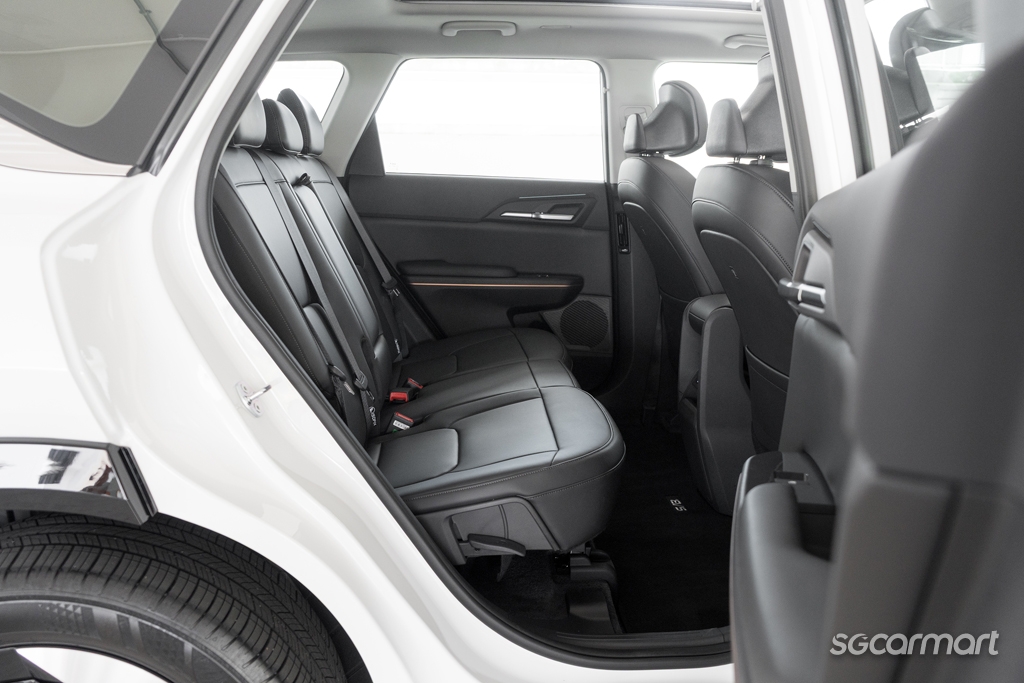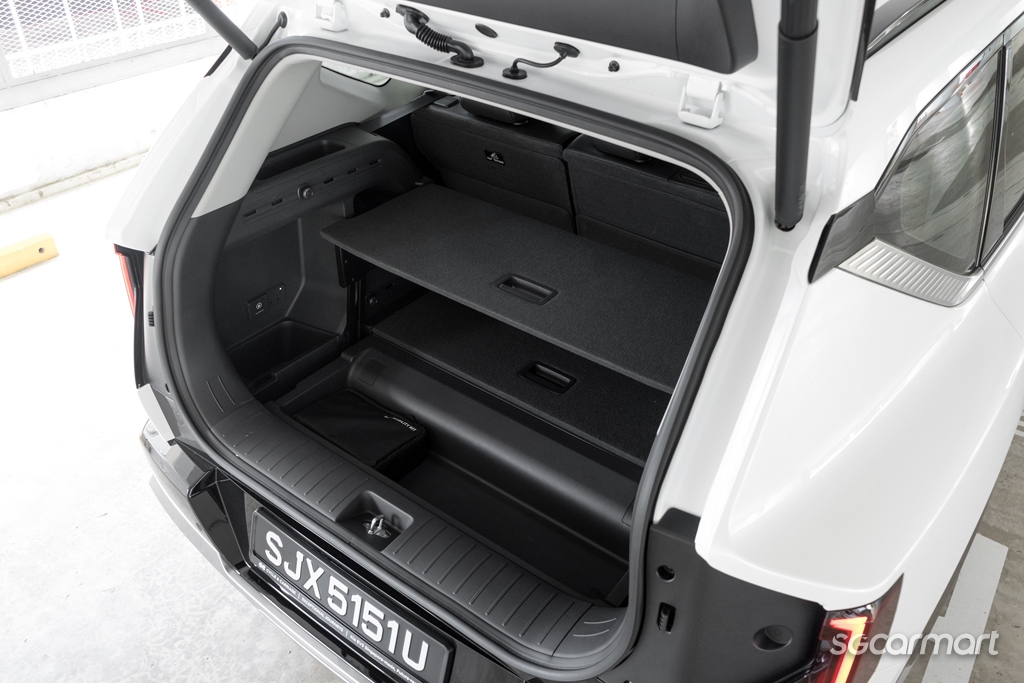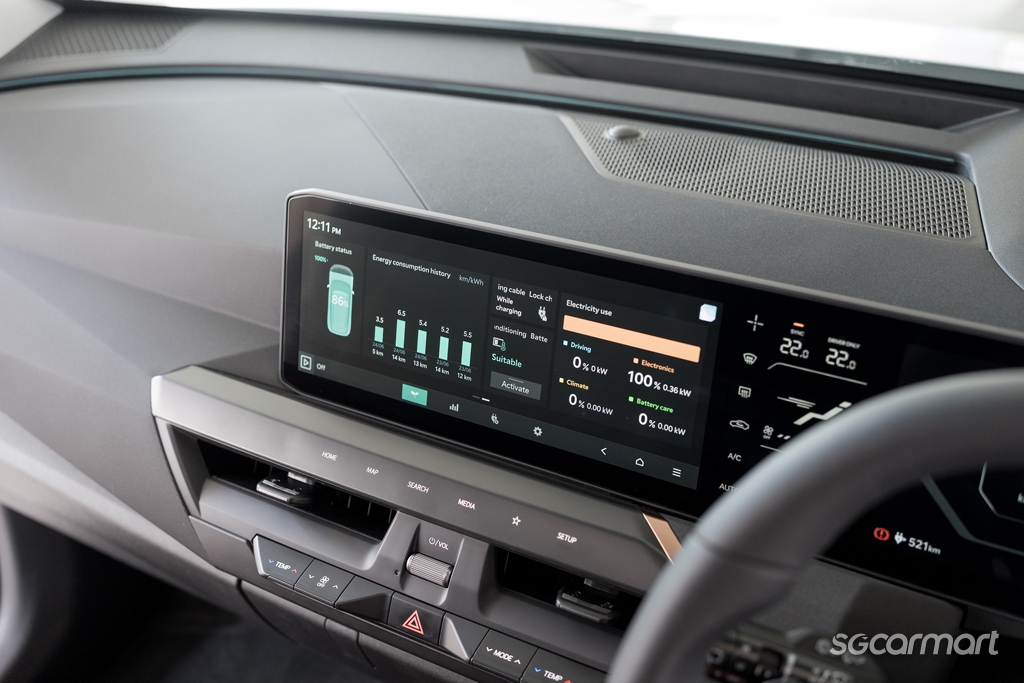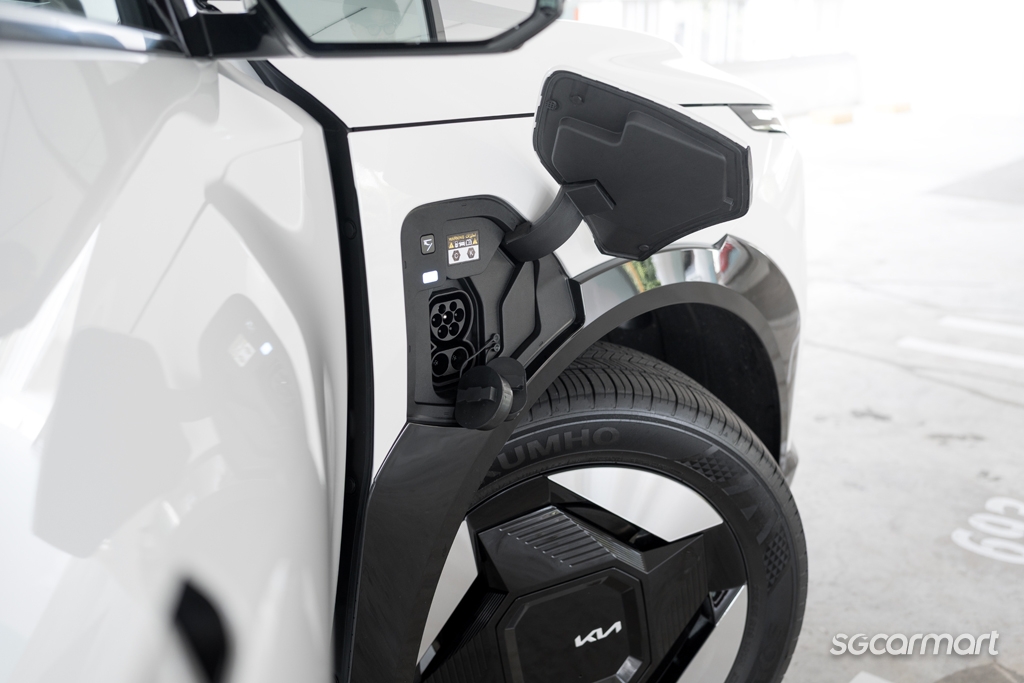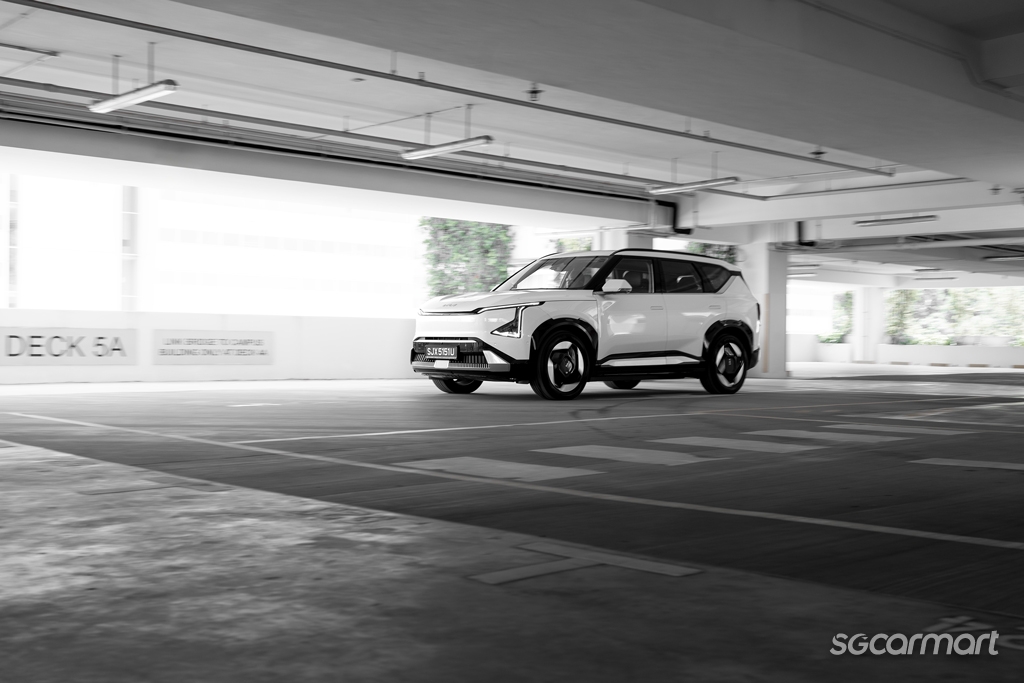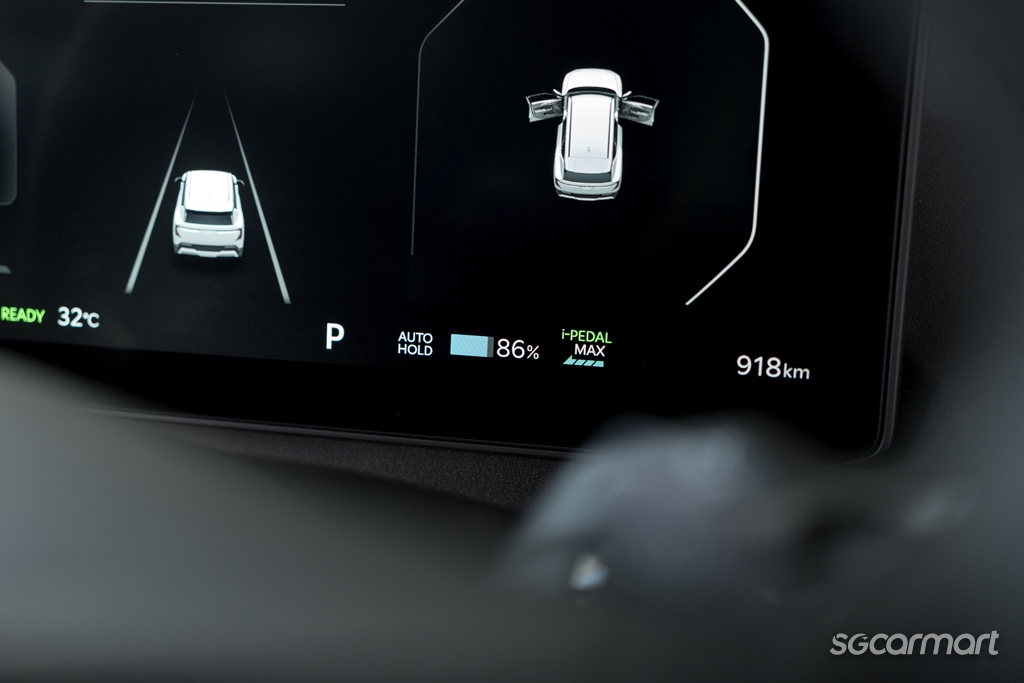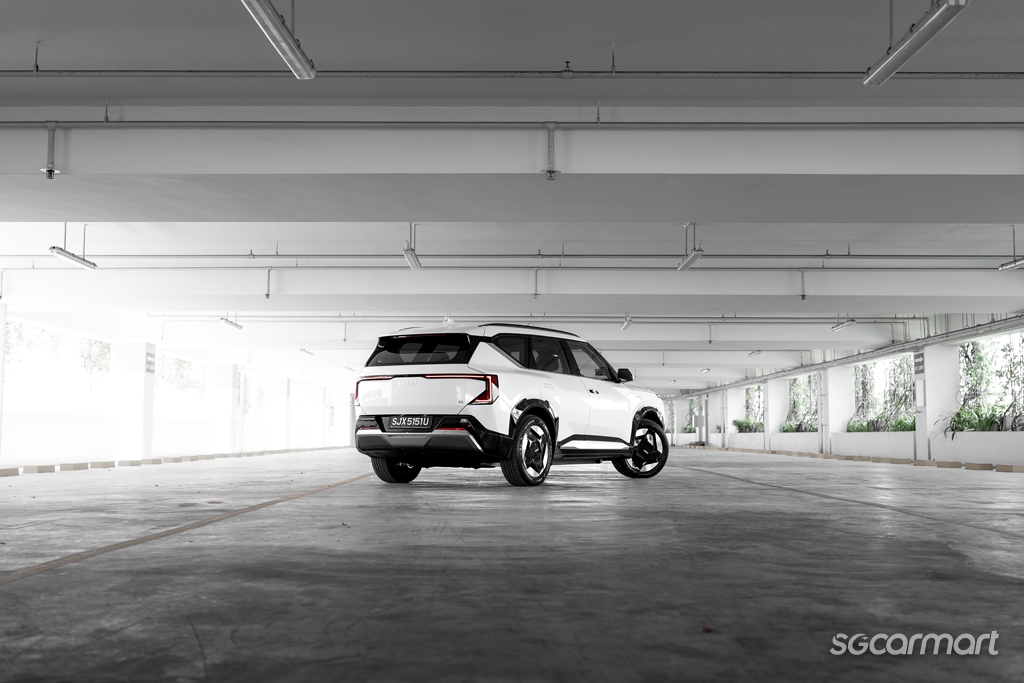Kia EV5 Earth Review
01 Jul 2025|27,562 views
What We Like
Snazzy looks
User-friendly cockpit
Spacious backseat
Efficient powertrain
Versatile interior
What We Dislike
Hefty mass
Can't fine tune the temperature for chiller/warmer
No app/digital key yet
For the longest time, Kia had a straightforward and effective gameplan: Value-for-money. Its models were better-equipped and less expensive than their Japanese rivals. It worked; buyers flocked to the brand, and Kia gained a newfound respect as its cars started looking better, too.
Today, Kia is up against Chinese carmakers that have adopted and modified this playbook. They are offering cars that are extensively equipped and aggressively priced, and the strategy is attracting buyers.
Kia, however, is banking on the fact that it is a more established brand with a greater presence. Its design language has grown stronger over time, further burnishing its appeal. And to compete with these newcomers, it has the eye-catching EV5, its latest contender in the mid-size electric SUV segment.
Beyond aesthetics
The EV5 has a distinctive design, for the only model that looks like it is its sibling, the EV9. You can't say the same about many of the Chinese EVs today, many of which look alike. You could swap badges among them and few consumers would be the wiser.
There's no mistaking the EV5 for another brand's model, though. It features Kia's 'digital tiger face', while the rest of the SUV is a mix of sharp angles and muscular lines. The squarish wheel design is striking as well.
The EV5 comes in Air, Earth, and GT-Line variants. Air is the base model with the least equipment, while the range-topping GT-Line offers the most kit and performance.
Time will tell whether the shiny black cladding on the Earth variant can resist the inevitable scratches that occur during washing
Obviously, the EV5 Earth is the mid-tier model. Like the GT-Line, it uses the larger 88.1kWh LFP battery (the Air has a smaller 64.2kWh LFP battery). Of course, compared to the Air, the EV5 Earth also has larger wheels and more standard kit.
It also has the distinction of being the third new car and first Kia sold here that's made in Singapore. Like the Hyundai Ioniq 5 and Ioniq 6, the EV5 is assembled at the Hyundai Motor Group Innovation Centre Singapore (HMGICS) facility in Jurong.
Yes, the cockpit is digital, but it has a good amount of good old fashioned analogue controls to simplify operations
Balancing act
National pride aside, the EV5 impresses with its cockpit, which is functional and well-thought out. In particular, the presence of physical controls in the form of buttons, dials and rollers enhances user-friendliness.
While many rival EVs concentrate these functions in the infotainment system for a minimalist look, this doesn't sit well with users who don't want to memorise a new menu layout to make finding functions easier.
Thus, while the EV5's steering wheel seems cluttered at first, every button has a specific function, whether it's setting the following distance for the adaptive cruise control or scrolling through your music tracks. I also like how the car's On/Off button is on the gear selector, making it convenient to select 'Drive' after turning on the car, or turning it off after pressing 'Park'.
Although the infotainment system is intuitive, the climate display on the right side of the screen is partially obscured by the steering wheel. But it makes up for this by having toggles for adjusting the fan speed and temperature - offering the sort of tactility missing in other electric rivals.
Other goodies include a panoramic roof, a charging pad, massage functions for the driver, and a console that can chill or warm its contents. However, there's just two temperature settings: Cold (5 degrees) or Hot (55 degrees). And unlike rivals like the Aion V, the cooling/warming function cannot be set to continue operating after the vehicle is turned off.
The compact chiller/warmer is less of an issue compared to not being able to set specific temperatures
Another potential pain point is the cupholders. They're wide enough to fit 600ml bottles of water, but not anything wider. I had to squeeze my insulated bottle (it holds just over 500ml) to make it fit in the cupholder by the door. Meanwhile, the ones below the dashboard are too shallow, so the bottle tips over easily while cornering.
The EV5's 2,750mm wheelbase and flat rear floor combine to deliver plenty of backseat space so even occupants over 1.75m tall will be comfortable here. There's no third climate zone, but the air vents on the B-pillars will help ensure they stay frosty.
The roomy backseat can be converted into a picnic bench, while the parcel shelf also doubles as a table
Practicality and performance
The EV5 caters to outdoorsy owners. You can fold down the rear seats and use the parcel shelf as a picnic table (on Earth and GT-Line models). With V2L function and the ability to idle without tailpipe emissions, you can 'camp' in air-conditioned comfort, too.
When not deployed for camping duties, the boot has 513 litres with the rear seats in place and 1,714 litres when the seatbacks are folded.
The 88.1kWh LFP battery offers a WLTP range of 540km, which for the average driver would mean recharging every 10 days. With a maximum DC charging speed of 141kW, the battery goes from 10% to 80% in 38 minutes.
The claimed average consumption of 5.4km/kWh is accurate. Over three days of driving in mixed conditions (70% city and 30% expressway), I averaged 5.6km/kWh. Someone with a lighter right foot could probably get even better figures.
The EV5 Earth delivers 100kW (134bhp) and 310Nm of torque, but since it weighs over 2.1 tonnes, it has a leisurely century sprint time of 11.6 seconds. Once the inertia is overcome, progress is linear and silent, thanks to the instant torque.
The helm feels positive, and the ride is well-sorted, with the dampers able to soak up bumps while providing decent body control. The EV5 Earth isn't marketed as sporty, so its polite manners and neat handling were as expected.
Thanks to the prominent 'shoulders', this SUV feels large, especially when you're parking. But it never behaves in a boat-like manner - there's no diving under braking or squatting under acceleration.
Unexpected, on the other hand, was the EV5's timid regenerative braking. Level 3 regenerative braking in other Kia EVs such as the Niro is very close to one-pedal driving. Here, it's only possible when you choose i-PEDAL.
However, i-PEDAL was my least favourite setting. Perhaps the software and/or hardware need refining, but it felt jerky at times, as if the brakes were being cycled on and off to maintain the set speed.
In need of enhancing, too, is Remote Smart Parking Assist 2 (standard on Earth and GT-Line models). Though it can park the EV5 without needing to detect neighbouring vehicles, it does not work as quickly as expected.
For safety reasons, there's no 'one-touch' operation. The driver must press and hold the specific button while the system operates, to ensure that the driver maintains as much control as possible.
But if there's one thing that the EV5 does need, it's an app that lets drivers use their phone as a digital key. Without it, you can't remotely pre-cool the car, which is one of the reasons why drivers choose EVs. At time of writing, Kia has no plans to introduce this yet.
Ponder this element
Despite the missing app, small chiller/heater compartment, and the need for a quicker parking function, the EV5 remains a polished, accomplished SUV.
The user-friendly, button-filled cockpit is a rarity in a world that prefers touchscreens. It rides well, has an efficient powertrain with relatively good range, and a roomy backseat, too. And the distinctive design certainly burnishes its appeal.
Kia's current playbook is solid for it is focussing on delivering an even more refined experience to drivers and passengers. The EV5's challenge is to convince buyers that what it delivers is indeed more attractive than its rivals' value-for-for-money proposition.
These reviews may also interest you
Boasting refinement, generosity in equipment, and rugged presence matched by few rivals, the V marks yet another stellar electric package from GAC Aion
The Tesla Model Y returns with an upgraded shell and plenty of new technology but will struggle in a market that is now filled with more convincing rivals
The BYD Sealion 7 combines space and comfort with more power than you realistically need
What We Like
Snazzy looks
User-friendly cockpit
Spacious backseat
Efficient powertrain
Versatile interior
What We Dislike
Hefty mass
Can't fine tune the temperature for chiller/warmer
No app/digital key yet
For the longest time, Kia had a straightforward and effective gameplan: Value-for-money. Its models were better-equipped and less expensive than their Japanese rivals. It worked; buyers flocked to the brand, and Kia gained a newfound respect as its cars started looking better, too.
Today, Kia is up against Chinese carmakers that have adopted and modified this playbook. They are offering cars that are extensively equipped and aggressively priced, and the strategy is attracting buyers.
Kia, however, is banking on the fact that it is a more established brand with a greater presence. Its design language has grown stronger over time, further burnishing its appeal. And to compete with these newcomers, it has the eye-catching EV5, its latest contender in the mid-size electric SUV segment.
Beyond aesthetics
The EV5 has a distinctive design, for the only model that looks like it is its sibling, the EV9. You can't say the same about many of the Chinese EVs today, many of which look alike. You could swap badges among them and few consumers would be the wiser.
There's no mistaking the EV5 for another brand's model, though. It features Kia's 'digital tiger face', while the rest of the SUV is a mix of sharp angles and muscular lines. The squarish wheel design is striking as well.
The EV5 comes in Air, Earth, and GT-Line variants. Air is the base model with the least equipment, while the range-topping GT-Line offers the most kit and performance.
Time will tell whether the shiny black cladding on the Earth variant can resist the inevitable scratches that occur during washing
Obviously, the EV5 Earth is the mid-tier model. Like the GT-Line, it uses the larger 88.1kWh LFP battery (the Air has a smaller 64.2kWh LFP battery). Of course, compared to the Air, the EV5 Earth also has larger wheels and more standard kit.
It also has the distinction of being the third new car and first Kia sold here that's made in Singapore. Like the Hyundai Ioniq 5 and Ioniq 6, the EV5 is assembled at the Hyundai Motor Group Innovation Centre Singapore (HMGICS) facility in Jurong.
Yes, the cockpit is digital, but it has a good amount of good old fashioned analogue controls to simplify operations
Balancing act
National pride aside, the EV5 impresses with its cockpit, which is functional and well-thought out. In particular, the presence of physical controls in the form of buttons, dials and rollers enhances user-friendliness.
While many rival EVs concentrate these functions in the infotainment system for a minimalist look, this doesn't sit well with users who don't want to memorise a new menu layout to make finding functions easier.
Thus, while the EV5's steering wheel seems cluttered at first, every button has a specific function, whether it's setting the following distance for the adaptive cruise control or scrolling through your music tracks. I also like how the car's On/Off button is on the gear selector, making it convenient to select 'Drive' after turning on the car, or turning it off after pressing 'Park'.
Although the infotainment system is intuitive, the climate display on the right side of the screen is partially obscured by the steering wheel. But it makes up for this by having toggles for adjusting the fan speed and temperature - offering the sort of tactility missing in other electric rivals.
Other goodies include a panoramic roof, a charging pad, massage functions for the driver, and a console that can chill or warm its contents. However, there's just two temperature settings: Cold (5 degrees) or Hot (55 degrees). And unlike rivals like the Aion V, the cooling/warming function cannot be set to continue operating after the vehicle is turned off.
The compact chiller/warmer is less of an issue compared to not being able to set specific temperatures
Another potential pain point is the cupholders. They're wide enough to fit 600ml bottles of water, but not anything wider. I had to squeeze my insulated bottle (it holds just over 500ml) to make it fit in the cupholder by the door. Meanwhile, the ones below the dashboard are too shallow, so the bottle tips over easily while cornering.
The EV5's 2,750mm wheelbase and flat rear floor combine to deliver plenty of backseat space so even occupants over 1.75m tall will be comfortable here. There's no third climate zone, but the air vents on the B-pillars will help ensure they stay frosty.
The roomy backseat can be converted into a picnic bench, while the parcel shelf also doubles as a table
Practicality and performance
The EV5 caters to outdoorsy owners. You can fold down the rear seats and use the parcel shelf as a picnic table (on Earth and GT-Line models). With V2L function and the ability to idle without tailpipe emissions, you can 'camp' in air-conditioned comfort, too.
When not deployed for camping duties, the boot has 513 litres with the rear seats in place and 1,714 litres when the seatbacks are folded.
The 88.1kWh LFP battery offers a WLTP range of 540km, which for the average driver would mean recharging every 10 days. With a maximum DC charging speed of 141kW, the battery goes from 10% to 80% in 38 minutes.
The claimed average consumption of 5.4km/kWh is accurate. Over three days of driving in mixed conditions (70% city and 30% expressway), I averaged 5.6km/kWh. Someone with a lighter right foot could probably get even better figures.
The EV5 Earth delivers 100kW (134bhp) and 310Nm of torque, but since it weighs over 2.1 tonnes, it has a leisurely century sprint time of 11.6 seconds. Once the inertia is overcome, progress is linear and silent, thanks to the instant torque.
The helm feels positive, and the ride is well-sorted, with the dampers able to soak up bumps while providing decent body control. The EV5 Earth isn't marketed as sporty, so its polite manners and neat handling were as expected.
Thanks to the prominent 'shoulders', this SUV feels large, especially when you're parking. But it never behaves in a boat-like manner - there's no diving under braking or squatting under acceleration.
Unexpected, on the other hand, was the EV5's timid regenerative braking. Level 3 regenerative braking in other Kia EVs such as the Niro is very close to one-pedal driving. Here, it's only possible when you choose i-PEDAL.
However, i-PEDAL was my least favourite setting. Perhaps the software and/or hardware need refining, but it felt jerky at times, as if the brakes were being cycled on and off to maintain the set speed.
In need of enhancing, too, is Remote Smart Parking Assist 2 (standard on Earth and GT-Line models). Though it can park the EV5 without needing to detect neighbouring vehicles, it does not work as quickly as expected.
For safety reasons, there's no 'one-touch' operation. The driver must press and hold the specific button while the system operates, to ensure that the driver maintains as much control as possible.
But if there's one thing that the EV5 does need, it's an app that lets drivers use their phone as a digital key. Without it, you can't remotely pre-cool the car, which is one of the reasons why drivers choose EVs. At time of writing, Kia has no plans to introduce this yet.
Ponder this element
Despite the missing app, small chiller/heater compartment, and the need for a quicker parking function, the EV5 remains a polished, accomplished SUV.
The user-friendly, button-filled cockpit is a rarity in a world that prefers touchscreens. It rides well, has an efficient powertrain with relatively good range, and a roomy backseat, too. And the distinctive design certainly burnishes its appeal.
Kia's current playbook is solid for it is focussing on delivering an even more refined experience to drivers and passengers. The EV5's challenge is to convince buyers that what it delivers is indeed more attractive than its rivals' value-for-for-money proposition.
These reviews may also interest you
Boasting refinement, generosity in equipment, and rugged presence matched by few rivals, the V marks yet another stellar electric package from GAC Aion
The Tesla Model Y returns with an upgraded shell and plenty of new technology but will struggle in a market that is now filled with more convincing rivals
The BYD Sealion 7 combines space and comfort with more power than you realistically need
Car Information
Kia EV5 Electric Earth 88.1kWh (A)
$197,999
CAT A|Electric|5.4km/kWh
Horsepower
100kW (134 bhp)
Torque
310 Nm
Acceleration
11.6sec (0-100km /hr)
Promotion
Free insurance credits, petrol vouchers, upgrades and more with Kia Motorshow exclusive promotions!
Read moreThank You For Your Subscription.
- Beyond Aesthetics
- Balancing Act
- Practicality And Performance
- Ponder This Element

















































